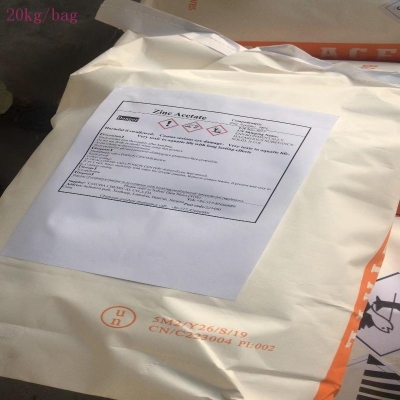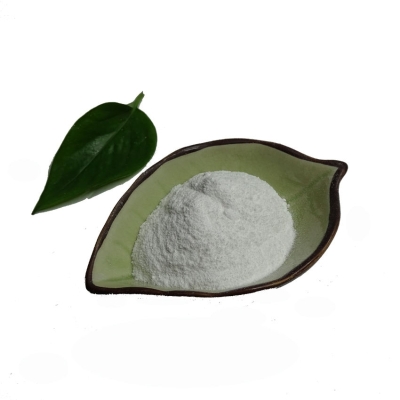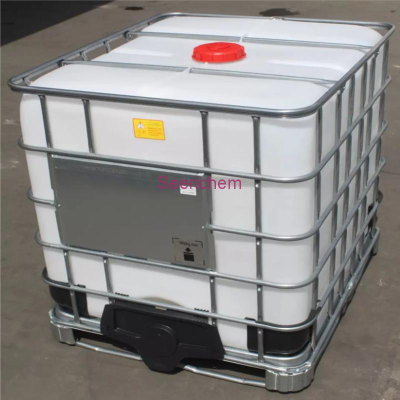-
Categories
-
Pharmaceutical Intermediates
-
Active Pharmaceutical Ingredients
-
Food Additives
- Industrial Coatings
- Agrochemicals
- Dyes and Pigments
- Surfactant
- Flavors and Fragrances
- Chemical Reagents
- Catalyst and Auxiliary
- Natural Products
- Inorganic Chemistry
-
Organic Chemistry
-
Biochemical Engineering
- Analytical Chemistry
-
Cosmetic Ingredient
- Water Treatment Chemical
-
Pharmaceutical Intermediates
Promotion
ECHEMI Mall
Wholesale
Weekly Price
Exhibition
News
-
Trade Service
On November 21-22, the 2018 China Chemical Industry Park Green Development Conference was held in Ningbo.
The meeting believed that after years of development, China Chemical Industry Park already has a certain industrial foundation and is currently making great strides on the road of green, intensive, and high-quality development.
Fu Xiangsheng, vice chairman of the China Petroleum and Chemical Industry Federation, pointed out at the meeting that the supporting role of chemical parks in the green development of the industry has gradually emerged.
In 2017, the total energy consumption of China's top 30 chemical parks was 145 million tons of standard coal, and the energy consumption of 10,000 yuan of industrial added value was 1.
73 tons of standard coal.
Among them, the energy consumption of the top ten industrial added value per 10,000 yuan is 1.
44 tons of standard coal, the COD emission per 10,000 yuan production value is 0.
09 kg, and the SO2 emission per 10,000 yuan output value is 0.
32 kg, which is better than the industry average.
In addition, the number of parks with an annual output value of 100 billion yuan has increased to more than 10, and the intensive development has achieved remarkable results, and the industrial structure has been continuously optimized.
But at present, the level of safety and environmental protection management in my country's chemical parks is uneven.
Participants believed that the overall level of green development in the park needs to be improved through further standardized construction.
Guo Fengyuan, deputy director of the Comprehensive Division of the Energy Conservation and Comprehensive Utilization Department of the Ministry of Industry and Information Technology, pointed out that the construction of green design, green technology, green factories and green supply chains for enterprises in the chemical park should be vigorously promoted.
In the future, the Ministry of Industry and Information Technology will implement dynamic management of the list of green parks, promote applicable experience, improve green development standards, and promote the green transformation of parks and enterprises.
Zhai Guiying, deputy director of the Environmental Protection and Foreign Cooperation Center of the Ministry of Ecology and Environment, pointed out that chemical companies along the Yangtze River are now densely populated.
30% of environmental risk companies in the basin are located within 5 kilometers of drinking water sources.
The overall rate of chemical companies in the Yangtze River Economic Zone is in the park.
Less than 40%, it is urgent to optimize and adjust the industrial layout, give full play to the advantages of chemical parks, and improve the level of green development.
How can the chemical park further improve its green level and achieve intensive and efficient development? Yang Ting, secretary general of the Chemical Park Working Committee of the Petrochemical Federation, gave suggestions: optimize the layout and lay the foundation for the green and ecological development of the park; optimize the industry to enhance the industrial relevance in the park ; Circulation optimization, build a recycling network in the chemical park, and improve the efficiency of resource intensive use.
In addition, it also includes governance optimization, energy saving optimization, smart optimization, and management optimization.
Yang Ting also proposed five goals for the green development of chemical parks: By 2020, the utilization rate of solid waste resources and water recycling will be significantly increased, and the discharge of major pollutants will be greatly reduced; the investment intensity of parks above the provincial level will not be less than 2 billion Yuan/km2; 75% of the national parks and 50% of the provincial parks carry out circular transformation; Realize more than 80% of petrochemical parks above the provincial level to carry out the creation of smart chemical zones; realize all the commitments of parks above the provincial level to practice responsible care.
The conference also commended more than 40 outstanding environmental protection workers in chemical parks, and representatives of 6 chemical parks signed the Global Charter of Responsible Care.
The conference was co-sponsored by the Petrochemical Federation, Ningbo Municipal People's Government and China National Chemical Economic and Technological Development Center, and received strong support from the Ministry of Industry and Information Technology, the Ministry of Ecology and Environment, AICM, and ICCA.
The meeting believed that after years of development, China Chemical Industry Park already has a certain industrial foundation and is currently making great strides on the road of green, intensive, and high-quality development.
Fu Xiangsheng, vice chairman of the China Petroleum and Chemical Industry Federation, pointed out at the meeting that the supporting role of chemical parks in the green development of the industry has gradually emerged.
In 2017, the total energy consumption of China's top 30 chemical parks was 145 million tons of standard coal, and the energy consumption of 10,000 yuan of industrial added value was 1.
73 tons of standard coal.
Among them, the energy consumption of the top ten industrial added value per 10,000 yuan is 1.
44 tons of standard coal, the COD emission per 10,000 yuan production value is 0.
09 kg, and the SO2 emission per 10,000 yuan output value is 0.
32 kg, which is better than the industry average.
In addition, the number of parks with an annual output value of 100 billion yuan has increased to more than 10, and the intensive development has achieved remarkable results, and the industrial structure has been continuously optimized.
But at present, the level of safety and environmental protection management in my country's chemical parks is uneven.
Participants believed that the overall level of green development in the park needs to be improved through further standardized construction.
Guo Fengyuan, deputy director of the Comprehensive Division of the Energy Conservation and Comprehensive Utilization Department of the Ministry of Industry and Information Technology, pointed out that the construction of green design, green technology, green factories and green supply chains for enterprises in the chemical park should be vigorously promoted.
In the future, the Ministry of Industry and Information Technology will implement dynamic management of the list of green parks, promote applicable experience, improve green development standards, and promote the green transformation of parks and enterprises.
Zhai Guiying, deputy director of the Environmental Protection and Foreign Cooperation Center of the Ministry of Ecology and Environment, pointed out that chemical companies along the Yangtze River are now densely populated.
30% of environmental risk companies in the basin are located within 5 kilometers of drinking water sources.
The overall rate of chemical companies in the Yangtze River Economic Zone is in the park.
Less than 40%, it is urgent to optimize and adjust the industrial layout, give full play to the advantages of chemical parks, and improve the level of green development.
How can the chemical park further improve its green level and achieve intensive and efficient development? Yang Ting, secretary general of the Chemical Park Working Committee of the Petrochemical Federation, gave suggestions: optimize the layout and lay the foundation for the green and ecological development of the park; optimize the industry to enhance the industrial relevance in the park ; Circulation optimization, build a recycling network in the chemical park, and improve the efficiency of resource intensive use.
In addition, it also includes governance optimization, energy saving optimization, smart optimization, and management optimization.
Yang Ting also proposed five goals for the green development of chemical parks: By 2020, the utilization rate of solid waste resources and water recycling will be significantly increased, and the discharge of major pollutants will be greatly reduced; the investment intensity of parks above the provincial level will not be less than 2 billion Yuan/km2; 75% of the national parks and 50% of the provincial parks carry out circular transformation; Realize more than 80% of petrochemical parks above the provincial level to carry out the creation of smart chemical zones; realize all the commitments of parks above the provincial level to practice responsible care.
The conference also commended more than 40 outstanding environmental protection workers in chemical parks, and representatives of 6 chemical parks signed the Global Charter of Responsible Care.
The conference was co-sponsored by the Petrochemical Federation, Ningbo Municipal People's Government and China National Chemical Economic and Technological Development Center, and received strong support from the Ministry of Industry and Information Technology, the Ministry of Ecology and Environment, AICM, and ICCA.







